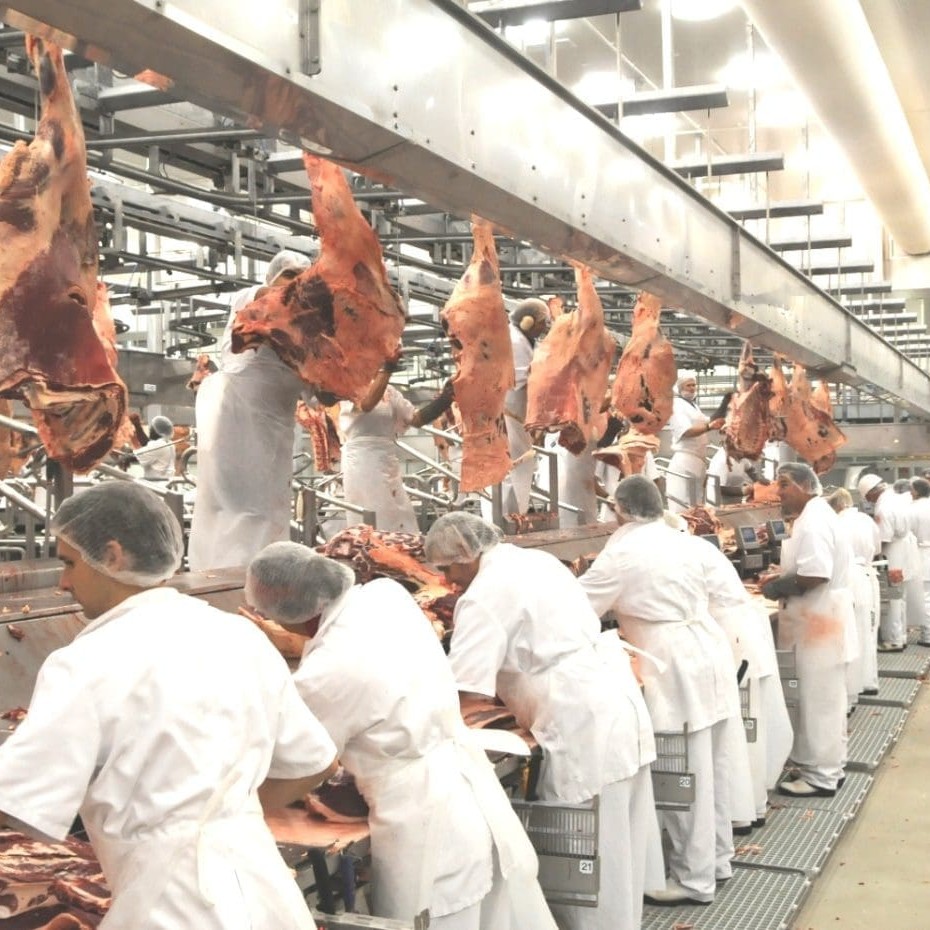 It’s a sign of the times when a big 4.4 percent decline in Eastern Australia’s weekly beef cattle kill can be recorded, yet the throughput of cattle across the seven-day cycle continues to sit well above 150,000 head.
It’s a sign of the times when a big 4.4 percent decline in Eastern Australia’s weekly beef cattle kill can be recorded, yet the throughput of cattle across the seven-day cycle continues to sit well above 150,000 head.
While it represents some respite from the all-time record kill set a week earlier, last week’s tally of 151,296 head still sits among the top ten weekly beef kills ever logged in Australia.
All major processing states logged substantial declines last week, led by Queensland, back 6pc to 77,831 head.
NSW was back 3pc on a week earlier to 36,043 head; Victoria back 2pc to 24,072 head, and South Australia minus-5pc to 8584. The only outlier was Tasmania, where kills lifted 1pc to 4766 head.
While there may have been some isolated weather impact on cattle flows due to earlier rain, the strongest explanation for the drop in kills last week appears to be the fact that, with a long-weekend looming, nobody wanted to schedule a Friday night or Saturday killfloor or boning-room shift, in order to intrude on the ‘three-day break.’
Weekend work has been quite widespread this year as processors battle to cope with record throughput numbers, sparked by herd build-up and the encroaching drought.
This current week’s kill will inevitably show an even bigger decline in numbers, of the order of 15-20pc, due to Monday’s Queen’s birthday holiday, which was taken at all processing sites. Weather may also be a factor, with widespread falls recorded from Victoria (where further falls up to 65mm were recorded overnight), all the way into southern and central Queensland.
Any decline in kills in coming weeks will have nothing to do with cattle shortage, however, as large Queensland processors told Beef Central yesterday they remain heavily booked heading into July/August.
“But rain or no rain, it was probably inevitable that cattle numbers will now start to tighten,” one processor said.
One factor in southern Queensland and northern NSW, at least, has been the very mild start to winter. The unusual absence of heavy frosts through to mid-June has left a lot of country in better shape than it would otherwise be in, which will tend to spread-out winter cattle turnoff. A week of heavy frosts and cold weather at this time of year inevitably sparks a rapid turnoff of cattle.
Reports of good oats crops, replenished by recent rain, will also spread-out supply later into August and September, in those areas where a crop went in. In the south, recent rain should deliver a good flow of finished grass cattle from October, processors said yesterday.
EOFY factor
Another factor which might impact on kills a little in coming weeks could be considerations associated with the end of financial year. There can be a tendency for slaughter cattle supply to fall a little heading in to June 30, for tax reasons, as some producers elect to hold cattle over to the new financial year. The advent of BAS has diluted some of that, but processors say it still impacts on thinking among some producers.
The EOFY impact, if any, could well be overwhelmed this year by the need to sell cattle brought on by the drought, however.
Yet another factor raised in last week’s kill report, could be the shift in focus in southern states from the drafting yard onto the tractor seat, as farmers burn some diesel to get a winter crop in, on top of the improved moisture profile following recent rain. That could impact saleyards numbers for the next week or two.
While one large southeast Queensland processor lifted its grid rates 5c/kg last week, that appeared more to remain in sync with competitors’ pricing, rather than supply reasons.
Prices are not yet showing signs of reflecting the recent softening trend in the A$. Processors said the A$ would have to remain lower for at least a month, before it started to become a factor in livestock pricing, as older product moved through the system.
Major processor grids in southeast Queensland were unchanged this week. Quotes included four-tooth grassfed ox 285-290c/kg, milk and two teeth 295-300c, best cow 235-250c/kg. Grassfed MSA steer showed a wide spread from 305c-340c from major processors.
- The Eastern Young Cattle Indicator closed yesterday at 303.25c/kg liveweight, up a further 1.25c on this time a week ago.



HAVE YOUR SAY